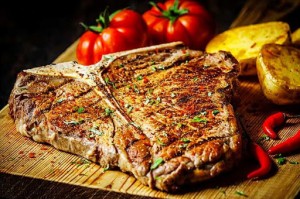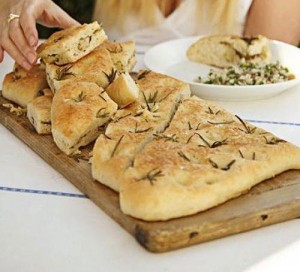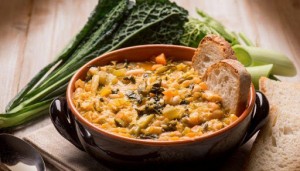One of the most difficult choices that you have to make when visiting Italy is which dish to try first. This decision is difficult because the Italian cuisine is so delicious and varied that you will want to order all dishes and all desserts, but you will know that physically is not possible to try all these temptations, prepared by the Italian masters.
If you do not plan to spend years in Italy, trying to taste all the popular Italian dishes, we offer you a simple solution – start with the oldest Italian dishes that are being prepared to the present day.
Italian dishes prepared from ancient times to the present day
Bread (pane)
Perhaps it would seem strange to you that we are starting with the Italian bread, but we can’t miss it, because bread is among the oldest foods that has been prepared on the Italian lands (and not only).
In Ancient Rome the bread at the table determined the social status. Patricians had the privilege to eat white bread, and plebeians had to be content with the dark.
The tradition of serving bread with almost every dish has been preserved until the present day, and masters prepare it following old family recipes, using techniques from the past times.
Nowadays in Italy, hundreds of types of bread are prepared and each has a different taste.
In Tuscany, the traditional bread, for example, is prepared without salt and the reason for this is once again hidden in ancient times. Centuries ago a conflict arose between Tuscany and the coastal areas, and in order to punish Tuscany, because the deliveries of salt passed through their lands, the areas that had a sea outlet decided to stop the deliveries of salt to Tuscany. To show that they can deal without this spice Tuscany started preparing its bread without salt and this tradition is preserved to the present day.
One of the most delicious types of Italian bread, which is very popular all over the world, originates from Liguria and it is called Focaccia. The Focaccia is something average between a traditional flat bread and… pizza.
The classic Focaccia is prepared with olive oil, salt and rosemary, but nowadays in every Italian bakery or restaurant you will be offered variations that may include cheese, sausage, olives, even zucchini.
Lasagna
Lasagna, which we all eat today with great pleasure, is among the oldest Italian dishes. Like most Italian dishes, its origin is contestable, but finally the Italian Culinary Academy declares the lasagna recipe of the Emilia-Romagna region as the original and classic.
Today, every area in Italy can offer you not one, but a few lasagna options and all of them are very delicious. However, there are several options that are preferred by both Italians and foreigners, and they are:
- Classic lasagna from Emilia – Romagna, which is prepared with Ragu sauce, Bechamel sauce and Parmesan;
- Neapolitan lasagna (Carnival lasagna), which is prepared with tomato sauce, meatballs, sausage, Ricotta, Mozzarella and eggs;
- Lasagna alla Norma (with eggplants);
- Vincisgrassi of the Marche region, which is prepared with minced pork and veal meat, chicken offal, proshutto crudo or Pancetta (bacon), tomatoes and Bechamel sauce.
Pizza
It was clear to you that we won’t miss the pizza when we talk about the culinary traditions of Italy. Moreover, pizza ranks among the oldest Italian dishes, which are now prepared all over the world (and they are consumed with pleasure, of course).
We assume that you have all heard the story of the famous pizza Margherita and maybe you think that this dish appeared on the Italian table after the year 1889, when the master-chef Raffaele Esposito had prepared it for queen Margherita.
The history of this pizza, however, is much more older and starts before 1889, since the times when people began to grind barley seeds and to mix them with water, then to knead the dough and to bake flat breads on hot stones.
Then the Egyptians came and they exchanged yeast for other goods, so the Italians started adding yeast to the barley flour and the water in order to make the flat breads softer and fluffy.
Thereafter, this paste dish spread throughout southern Italy, as in the beginning the pizza was prepared only with garlic, salt and oil, and later on it was prepared with butter, cheese and aromatic herbs.
According to this description it resembles the focaccia, right?
After the appearance and spreading of tomatoes, people started preparing tomato sauce that rapidly found its place on the pizza. In order to be even more accurate, according to preserved documents, the first use of tomatoes in the preparation of pizza dates back to 1840 – 1850.
We go back to Raffaele Esposito, who was invited together with his wife to the royal court of king Umberto I and queen Margherita, in order to present the popular paste dish to the Neapolitans.
Most stories tell that Esposito prepared and presented to the royal people a pizza with tomatoes, cheese and basil which he named after the queen, but the truth is that the master presented three types of pizza – „Vasenicola” (with basil, bacon and cheese), „Marinara” (with tomatoes, garlic, olive oil and oregano) and „Margherita” (with Mozzarella, tomatoes and basil).
All three types of pizza were very tasty, but because pizza Margherita was with the colors of Italy and because it was named after the queen, logically it became the most popular Italian pizza, which is still one of the symbols of Italy.
Ribollita (country winter soup with bread, cabbage and beans)
This delicious Italian dish, which you can taste today in a trattoria in Florence, is being prepared since the Middle Ages. Although is not as popular as the pizza and pasta, Ribollita is a soup that is loved by the Italians, and they eat it with pleasure in the winter period.
Ribollita is a dish which, as we have already mentioned, has been prepared since the Middle Ages in some areas of Tuscany such as Pisa, Florence and Arezzo. The story tells that during that time rich people ate meat on a daily basis, while the poor ones couldn’t afford that luxury, so they had to invent dishes that were cheap and nutritious.
Tuscany is an agricultural area and the poor people have grown a lot of vegetables like beans and cabbage, that is why in Ribollita these two products are basic. Old bread is also added to the soup in order to make it more nutritious (and to replace meat), and to give a sense of satisfaction for a longer period.
The poor Tuscan families prepared the soup on Fridays and ate it during the whole week, they just added water and bread, heated the soup again and this was their nutritious food for the entire week.
Pasta alla Norma
Pasta alla Norma is much more than a simple recipe for Italian pasta. The dish is a real masterpiece which long ago has passed the borders of Sicily and took its place in the menu of all who love the Italian cuisine.
The simple tastes of tomato, basil, fried eggplants and ricotta are perfectly matched to create an incredible taste explosion that is remembered for life.
The dish is not one of the oldest Italian dishes, but it is not quite new, so we have decided to include it in our list.
The stories about the creation of pasta alla Norma dish are two. According to the first one, in 1831 Vincenzo Bellini presented for the first time in La Scala his opera „Norma”, and his work caused such a furor that all people started using the word „norm” for everything that seemed to them perfect.
According to the second story, in 1920 the playwright from Catania (Sicily) Nino Martoglio met with friens for lunch. The landlady served pasta with eggplants, tomatoes, basil and cheese, which was loved so much by Martoglio, that he exclaimed: „This is a real Norma”.
The phrase that was said by the playwright was highly appreciated and since then the dish is called pasta alla Norma (in honour of Bellini and his „Norma”).
Polenta
Polenta is a dish that every nation has prepared over the centuries. In our country it is called kachamak, in Romania – mamaliga, and in Italy – polenta.
But let’s go back to the oldest Italian dishes to which the polenta belongs…
„The birth place” of this simple, but very delicious dish is northern Italy and, in particular, the areas Veneto and Begamo. The polenta occupies such a high place in the culinary traditions of these areas, and it is as popular as the tagliatelle with Ragu sauce in Bologna or the pizaa in Naples.
Despite of the fact that it is very ancient, the dish that we know today is prepared only since… 200 years. Before that the polenta was prepared of flour of millet, buckwheat, and even chestnut flour.
Only when Christopher Columbus returns from America and brings the corn, people started preparing the polenta with corn flour.
In the XVIII century the dish became very popular among the poor classes of the population of Italy, because it was made only of flour, water and butter, and because it could be consumed both warm and cold.
Gradually from food for the poor, the polenta found its place on the table of the rich people, who used it as a garnish to the meat dishes.
Nowadays, every Italian restaurant offers polenta in its menu, and every Italian family has its own recipe that is handed over by a mother to a daughter.
Risotto
Speaking of the oldest Italian dishes, we have to mention the delicious saffron risotto. This tasty dish originates from Milan, and there are a few legends regarding its occurrence on the culinary scene.
According to the most interesting of them in 1574 the Flemish master Valerio di Fiandra worked on the stained glass of the Milan Cathedral. Valerio had one assistant who was called by everyone „Saffron”, because he loved to add a little bit of the expensive spice to the colors with which he painted in order to get a lighter shade. To have fun with his student, Valerio told him that one day he will put some saffron in the food plate.
In order to answer him, during the wedding of the daughter of Valeriod di Fiandra, the student added to the wedding rice dish a few pinches of saffron. When the initial shock of the guests, caused by the look of the dish, has passed, they tried it and were fascinated by its taste.
Whether this really happened or not, really doesn’t matter, because today the saffron risotto is one of the most popular dishes of the national cuisine of Italy.
Ossobuco alla Milanese
Ossobuco alla Milanese is prepared of tender veal with bone, boiled on very slow fire with white wine and vegetables. Traditionally, the meat is further flavored with „gremolata” (a mixture of lemon, parsley and garlic).
Until 1700, the dish was prepared without tomatoes, although this vegetable was already known in Italy. At the end of XIX century, people started using tomatoes in some of the variations of the dish.
Although that it is one of the oldest Italian dishes and one of the most delicious, Ossobuco is rarely offered in restaurant because its preparation requires at least 3 – 4 hours.
Bistecca Fiorentina (Florentine beefsteak)
Undoubtedly one of the most delicious Italian meat dishes is the Bistecca Fiorentina. The first information specifying that in the area of Tuscany, and especially in Florence, this delicious meal has been prepared since… the XIII century.
Even then, the dish was prepared according to very strict rules which haven’t changed until the present day.
What is so special about Bistecca Fiorentina?
The meat from which the steak is prepared must be of beef-cattle of the Chianina or Maremma that are bred in the region of Tuscany. The animals should be between 12 and 18 months old, and the meat for the steak have to be cut in a way to form a Т – shape bone with meat.
The preparation of Bistecca Fiorentina also is strictly regulated, as the thickness of the steak should be at least 5 cm. The dish must be prepared on a charcoal grill and the time for preparation shouldn’t exceed 5 – 7 minutes, on each side of the steak.
At the end of the cooking process, Bistecca Fiorentina has a crispy brown crust on both sides, but in the middle is alangle.
Bottarga
We will finish our list with one Sicilian delicacy, which is not well-known in our country, but is valued around the world just as much as truffles.
Bottarga is a salted fish caviar that has been dried in sea salt for several weeks. The result is a solid delicacy that can be consumed as antipasti or it can be added to pasta or pizza.
The delicacy has been prepared in Sicily since the beginning of the XVI century by the fishermen in order to provide food for the winter season when it is not possible to catch it.
Gradually, the Bottarga recipe has spread across Europe and today the delicacy is produced not only in Italy, but also by Spain, Greece, France, Croatia and other countries.


![[:bg]Италианско месо - Бистека Фиорентина[:en]Italian meat - Bistecca Fiorentina[:]](https://leonardobansko.com/wp-content/uploads/2019/01/italian-bistecca.jpg)

